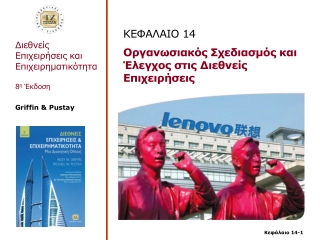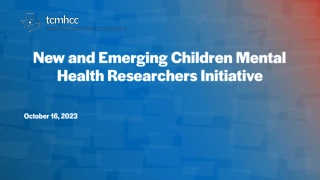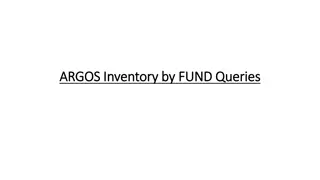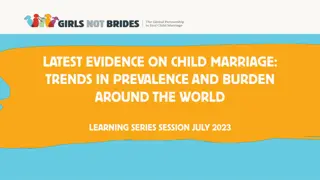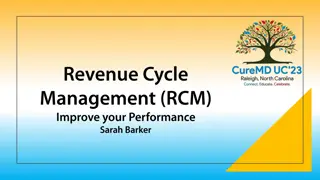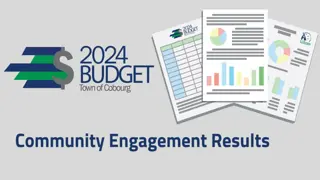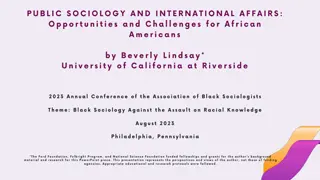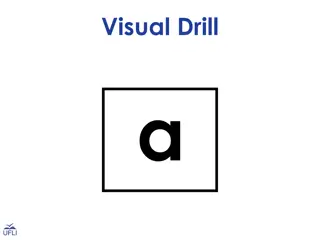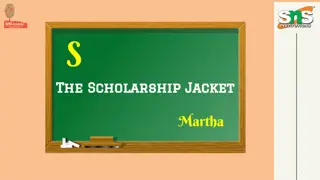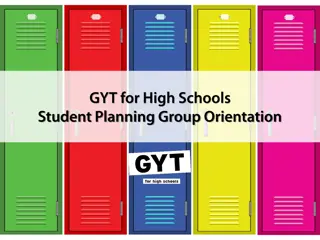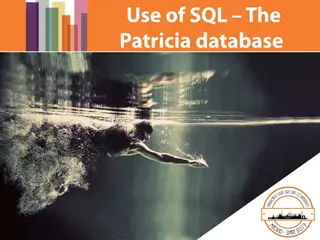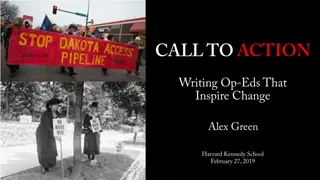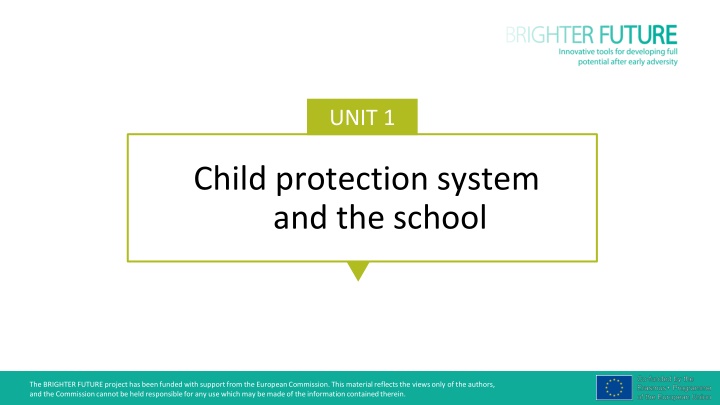
Child Protection System and School Challenges
Explore key challenges faced by a child like Noah, classmates, teachers, caregivers, and principals in the context of child protection systems and school environments. Learn about children's rights and why they may be in protection systems.
Download Presentation

Please find below an Image/Link to download the presentation.
The content on the website is provided AS IS for your information and personal use only. It may not be sold, licensed, or shared on other websites without obtaining consent from the author. If you encounter any issues during the download, it is possible that the publisher has removed the file from their server.
You are allowed to download the files provided on this website for personal or commercial use, subject to the condition that they are used lawfully. All files are the property of their respective owners.
The content on the website is provided AS IS for your information and personal use only. It may not be sold, licensed, or shared on other websites without obtaining consent from the author.
E N D
Presentation Transcript
UNIT 1 Child protection system and the school The BRIGHTER FUTURE project has been funded with support from the European Commission. This material reflects the views only of the authors, and the Commission cannot be held responsible for any use which may be made of the information contained therein. and the Commission cannot be held responsible for any use which may be made of the information contained therein. The BRIGHTER FUTURE project has been funded with support from the European Commission. This material reflects the views only of the authors,
Key challenges: discussion in pairs Noah, an 8-year-old child who recently moved into residential care, enters a new school. What are the main challenges for: Noah The classmates The teachers The caregivers The principal The BRIGHTER FUTURE project has been funded with support from the European Commission. This material reflects the views only of the authors, and the Commission cannot be held responsible for any use which may be made of the information contained therein. and the Commission cannot be held responsible for any use which may be made of the information contained therein. The BRIGHTER FUTURE project has been funded with support from the European Commission. This material reflects the views only of the authors,
Childrens rights and child protection systems The BRIGHTER FUTURE project has been funded with support from the European Commission. This material reflects the views only of the authors, The BRIGHTER FUTURE project has been funded with support from the European Commission. This material reflects the views only of the authors, and the Commission cannot be held responsible for any use which may be made of the information contained therein. and the Commission cannot be held responsible for any use which may be made of the information contained therein.
Why are children in the protection system? The BRIGHTER FUTURE project has been funded with support from the European Commission. This material reflects the views only of the authors, The BRIGHTER FUTURE project has been funded with support from the European Commission. This material reflects the views only of the authors, and the Commission cannot be held responsible for any use which may be made of the information contained therein. and the Commission cannot be held responsible for any use which may be made of the information contained therein.
The BRIGHTER FUTURE project has been funded with support from the European Commission. This material reflects the views only of the authors, and the Commission cannot be held responsible for any use which may be made of the information contained therein. and the Commission cannot be held responsible for any use which may be made of the information contained therein. The BRIGHTER FUTURE project has been funded with support from the European Commission. This material reflects the views only of the authors,
Children in alternative care Lower academic success (Flynn, Tessier, Coulombe, 2013) Lower job achievement in adult life (Hook, Courtney, 2011) Worse health conditions (Dixon, 2008) WHY? Interaction between individual factors (stress, motivation, self-esteem ) and social factors (school and caregivers expectations, (non)inclusive school policies, relations with peers and adults, care system, quality of interaction and responses ) (Sebba et al., 2015) Quality of school environment makes a difference The BRIGHTER FUTURE project has been funded with support from the European Commission. This material reflects the views only of the authors, and the Commission cannot be held responsible for any use which may be made of the information contained therein. and the Commission cannot be held responsible for any use which may be made of the information contained therein. The BRIGHTER FUTURE project has been funded with support from the European Commission. This material reflects the views only of the authors,
The rights of the child in an ecosystemic perspective Right to be guaranteed the conditions for physical, mental, spiritual, moral and social development (CRC, 1989). How to support these conditions as school? From an ecosystemic perspective, development occurs within an ecological system that promotes agency, learning, interaction through everyday proximal processes (Bronfenbrenner, 2005). Key aspects: Interaction with primary caregivers and key actors in different contexts Affordances of the environments attended by the child and the caregivers Ecological transitions as key moments for developing agency and learning Sense of belonging and community relations as resilience factors The BRIGHTER FUTURE project has been funded with support from the European Commission. This material reflects the views only of the authors, and the Commission cannot be held responsible for any use which may be made of the information contained therein. and the Commission cannot be held responsible for any use which may be made of the information contained therein. The BRIGHTER FUTURE project has been funded with support from the European Commission. This material reflects the views only of the authors,
Obstacles Current discourses surrounding students in alternative care, adoptees, refugee students are largely constituted in deficit ways (Uptin, Wright, Harwood, 2012). This positioning places the student in a frame of negative and deficit assumptions within schools (being traumatised, a victim and at risk). (Keddie, 2011) Institutional narratives that silence the students story and perspectives Implicit curriculum and school policy: competitive and standardized school environments, where some might fall out of the school s bounds of acceptability as students The good teacher as only hope: September is like the lottery. You cross your fingers and you pray for a good teacher. But it only happens once every many years. The BRIGHTER FUTURE project has been funded with support from the European Commission. This material reflects the views only of the authors, and the Commission cannot be held responsible for any use which may be made of the information contained therein. and the Commission cannot be held responsible for any use which may be made of the information contained therein. The BRIGHTER FUTURE project has been funded with support from the European Commission. This material reflects the views only of the authors,
Resources Ensuring the best interest of children in all actions Building a structural partnership between school and child protection services (joint trainings, multi-professional teams ) Participation of the adults who are responsible for the child to the school community and other organizations Whole-school approach Promoting protection factors at individual and environmental level Legitimising children's stories and experiences, representing diversity in books and materials used in the classroom Preventing discrimination and avoiding stigmatization. The BRIGHTER FUTURE project has been funded with support from the European Commission. This material reflects the views only of the authors, The BRIGHTER FUTURE project has been funded with support from the European Commission. This material reflects the views only of the authors, and the Commission cannot be held responsible for any use which may be made of the information contained therein. and the Commission cannot be held responsible for any use which may be made of the information contained therein.
References Bronfenbrenner U. (ed.) (2005), Making human beings human. Bio-ecological perspectives on human development, Sage, Thousand Oaks Dixon J. (2008), Young People Leaving Care: Health Outcomes. Child & Family Social Work, 13, 2, pp. 207-17. Flynn, R. J., Tessier, N. G., & Coulombe, D. (2013). Placement, protective and risk factors in the educational success of young people in care: cross-sectional and longitudinal analyses. European Journal of Social Work, 16(1), 70 87. Hook J.L.., Courtney M.E. (2011), Employment Outcomes of Former Foster Youth as Young Adults: The Importance of Human, Personal, and Social Capital. Children and Youth Services Review, 33, 10, pp. 1855-65. Keddie, A. (2011). Pursuing justice for refugee students: Addressing issues of cultural (mis)recognition. International Journal of Inclusive Education, 15(1), 1 16. Sebba J. et al. (2015), The Educational Progress of Looked after Children in England: Linking Care and Educational Data, University of Oxford Department of Education/University of Bristol, Oxford. Uptin, J., Wright, J. & Harwood, V. (2013). It felt like I was a black dot on white paper : examining young former refugees experience of entering Australian high schools. The Australian Educational Researcher, 40, 125 137. Youdell, D. (2011). School trouble: Identity, power and politics in education. London: Routledge. The BRIGHTER FUTURE project has been funded with support from the European Commission. This material reflects the views only of the authors, The BRIGHTER FUTURE project has been funded with support from the European Commission. This material reflects the views only of the authors, and the Commission cannot be held responsible for any use which may be made of the information contained therein. and the Commission cannot be held responsible for any use which may be made of the information contained therein.
NOTES Children s rights and child protection systems The United Nations Convention on the Rights of the Child (CRC) affords every child the right to a standard of living adequate for the child s physical, mental, spiritual, moral and social development (art. 27) and requires that parents or thoseresponsiblefor the child secure, within their abilitiesand financial capabilities, the conditionsof living necessary for the child s development . When, for whatever reason, parents find themselves unable to fulfil these obligations, statesare responsiblefor ensuring such care in situations where children are temporarily or permanentlydeprived of his or her family environment (art.20). After assessingthe situation, the children are provided with an alternative care solutionuntil they can return to their family, either in a fosterfamily or in a residential facility. When return to the family will not be possible, a permanentsolutionsuch as adoption may also be considered. suggeststhat they are more effective when decided and defined in a collaborative way, involvingthe family of origin, other trusted people in the family sentourage, and social worlers who already know the family and support them. kinship care (when the child te. When the child is in a conditionthatis assessedby the Court as a state of abandonment , the child can be adopted. Protection measures (to be adapted to your country) Foster care grants the custody of a child to a family for a time, without there being an adoptivepurpose. The purpose is to give children the opportunity to grow up in a more favorablefamily environmentthan the original one. According to the relationshipbetween children and the foster family, the fosteringwill be: kinship care (foster with grandpaterns, aunts and uncles, siblings, or other relatives) or non kinship care (non relatives). In the latter case, there are three types: (1) voluntaryfamilies; (2) specialized families in which some of its membershave the experience or training to work with children with special needs, these families do not have an employmentrelationship; and (3) professionalizedfamilies, in additionto the requirementsfor specialized families, there is an employment relationshipbetween the foster parents and the public entity. Foster care may adoptthe following modalitiesdepending on its duration and objectives: (1) emergency care: while the correspondingfamily protectionmeasure is decided, it should last less than six months; (2) temporary care, while improvements are made for the family reunification. Its maximum duration should not exceed two years, unless the best interestof the minor advisesthe extension of the measure; and (3) permanent care, when it is confirmedthat family reunificationis not possible. Why are children in the protection system? There are several reasonsfor the States to put into act protective measures towardschildren. In the EU, the States have the duty to support families to remove any potentialobstaclewhich may prevent the parents from performing their functionsaimed at ensuring their children s care, educationand socialization. However, in some cases the family and the community where the child lives do notmeet the child s basic needs. In case the family of origin of a child lives a situation of temporary difficulty that cannotbe addressed by a family support at home; if the child is severely neglected; if the parents behavior produces seriousdamage to the child and jeopardizes their safety and well-being, in order to meet the child s best interest the protectionsystem is entitled to intervene with protectivemeasuresin collaborationwith social and healthcare services. These protective measurescan involve different forms and the literature The BRIGHTER FUTURE project has been funded with support from the European Commission. This material reflects the views only of the authors, and the Commission cannot be held responsible for any use which may be made of the information contained therein.
The second protectionmeasure is residential care. When the possibility of fostercare is ruled out, the child will live in a center with other children in the same situation. Withinthis measure can be found: (1) welcome centre where care is immediate and transitorywhile the diagnosisof the situation is made to determine the measure to be applied; (2) residential care centre where children are offered an alternative resource to a family environment; and (3) specific care centre for children with some type of specificity, such as behavioral problems. The purpose of these is to provide the child with an adequate framework for his/her educationand development. Obstacles Schoolscan also be spaces that restrict learning and social inclusion. They have the power to designatethe identitymarkers that are mostdesirable and enable certain studentsto succeed in the institutionand conversely these same social and cultural markers can very easily exclude difference. performatives that do not make sense in the discoursesthat frame schooling, or that are counter to prevailing institutionaldiscourses, may fail or may act to constitutea subject outsidethe boundsof acceptability as a student (p. 37). Therefore the refugee can too easily stand outside these bounds of acceptability. Where difference is identified it is often equated with marginality, deficit and lack, due to the (mis)recognitionand misrepresentationof the student(Keddie 2011). This positioningplaces the refugee studentin a strataof negative and deficit assumptionswithin schoolssuch as being traumatised, a victim and at risk. The BRIGHTER FUTURE project has been funded with support from the European Commission. This material reflects the views only of the authors, and the Commission cannot be held responsible for any use which may be made of the information contained therein.

